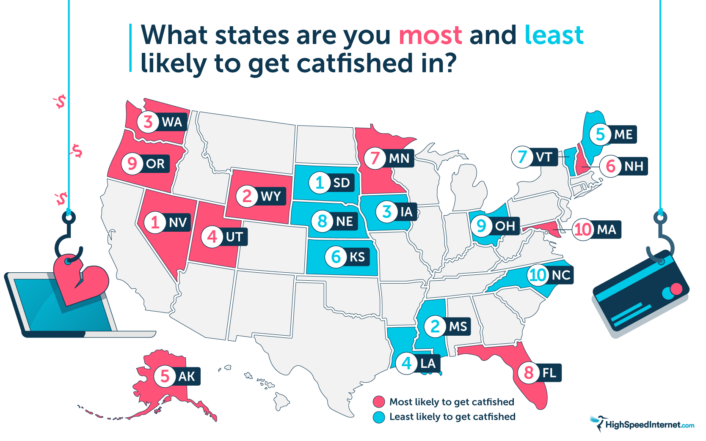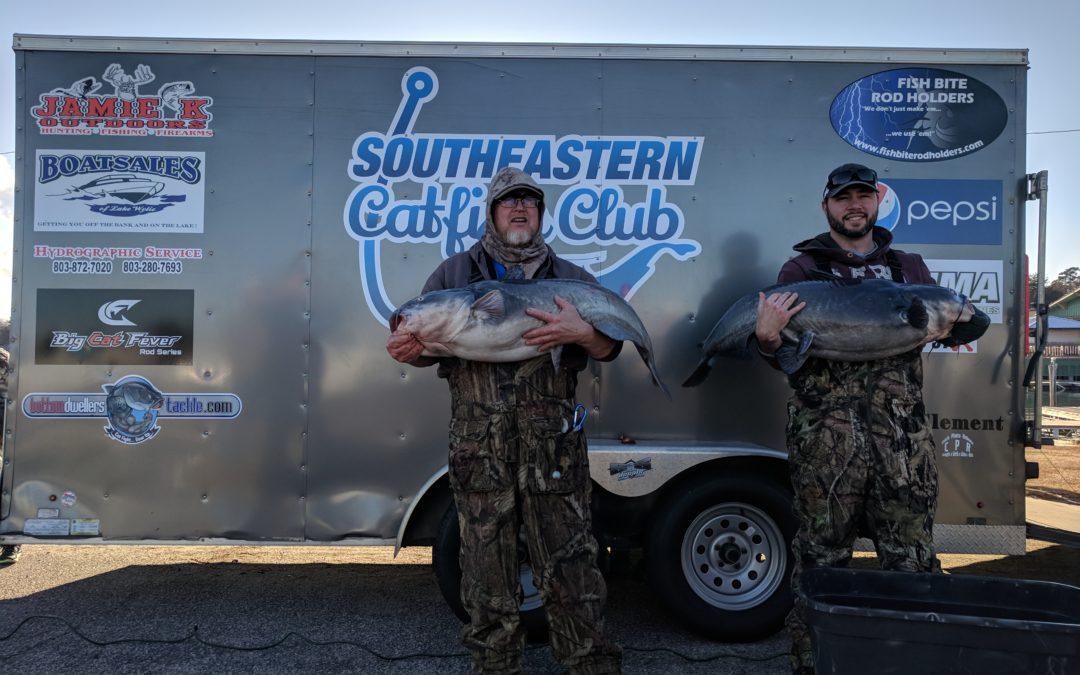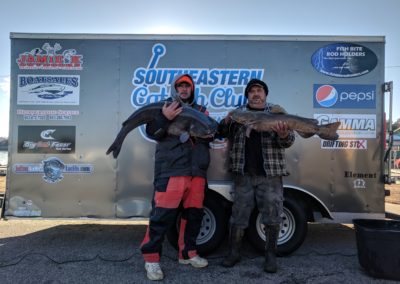
When does WVDNR stock trout in West Virginia?
January 11 and 12 lakes adjusted to reflect changes listed on WVDNR website. The West Virginia Division of Natural Resources began its annual trout stocking on Monday, January 3. Please check back daily for updates on trout stocking locations throughout the state.
When does catfish stocking season start and end?
The schedule usually coincides with the end of the ultra-popular trout stocking season. This usually takes place in late May or early June. The 2021 catfish stocking season officially began in the Mountain State on June 2. Eight lakes received channel catfish stocking that day. One June 3, nearly two dozen additional sites were stocked.
How many pounds of Catfish does the WV DNR stock each year?
Last year, the WV DNR planned to stock roughly 6,000 pounds of channel catfish across 41 lakes. Below, you can find the dates and locations where catfish will be stocked, as well as a breakdown of specific locations by date.
Where can I fish for tiger trout in WV?
New Creek Dam No. 14 New Creek Dam No. 14 On Wednesday, April 7, Governor Jim Justice announced that West Virginia will introduce tiger trout stocking throughout the state. This marks the first time in several decades that Mountain State anglers will have the opportunity to catch the unique species.

Where do they stock catfish in WV?
West Virginia Catfish Stocking Dates 2022Castlemans Run Lake.Deegan Lake.Hinkle Lake.Lick Creek Pond.Millers Fork Pond.North Bend Lake.Rollins Lake.Tomlinson Run Lake.More items...
Where do they stock opequon Creek?
North Fork of South Branch (catch-and-release), in Pendleton County, is stocked variably. Opequon Creek, in Berkeley and Jefferson counties, is stocked once in January, once in February, and once weekly March through May, then again during the week of Columbus Day and again a week later.
What months do they stock trout in WV?
CHARLESTON, WV – Gov. Jim Justice today announced the launch of a new fall Monster Trout stocking program to coincide with West Virginia's regular fall trout stocking during the weeks of Oct. 17 and Oct. 24, 2022.
What streams are stocked in WV?
Streams such as Cranberry River, South Fork of Cherry River, Williams River, and the upper Elk River are just a few examples of these waters. A larger list of streams stocked with trout can be found in the WV Fishing Regulations.
Can you fish opequon Creek?
Can you fish in Opequon Creek? Opequon Creek is a stream near Martinsburg. The most popular species caught here are Smallmouth bass, Rainbow trout, and Channel catfish. 92 catches are logged on Fishbrain.
Can you trout fish at night in WV?
Night fishing is allowed, so you can practice your cast under the stars of Pocahontas County's famous dark sky. Reminder: You'll need a West Virginia license and trout stamp, along with a National Forest Stamp for some rivers. Where are you catching the next big one?
What fish are in Blackwater River in WV?
Angling for redbreast (“red throats” or “red robins”) and redear (“shellcrackers”) sunfish is also quite good in the spring. The river also hosts largemouth bass, bluegill, crappie, flier, blue catfish and chain pickerel populations.
Where are they stocking trout in West Virginia?
Places in West Virginia being stocked with trout this fallBuffalo Fork – Pocahontas.Seneca – Pocahontas.Watoga – Pocahontas.Knapps Creek – Pocahontas.West Fork of Greenbrier River – Pocahontas.Williams River – Pocahontas, Webster.Cranberry River – Nicholas Pocahontas, Webster.Elk River – Randolph, Webster.More items...•
Where do they stock the Cranberry River?
11:3615:42Trout Fishing West Virginia's Cranberry River - YouTubeYouTubeStart of suggested clipEnd of suggested clipRiver. Public access goes all the way up and down simply because this area is in the national forestMoreRiver. Public access goes all the way up and down simply because this area is in the national forest. However there's a locked gate where he starts his adventures. And we wanted to go all the way up
Where is the best fishing in West Virginia?
Narrow down your fishing options in West Virginia, with our list of the top rivers and lakes for trout in West Virginia.Elk River. ... North Fork River. ... Blackwater River. ... Pipestem State Park. ... Reservoir Tailwater Area. ... Greenbrier River. ... Cacapon State Park Lakes. ... Spruce Knob Lake. Boat on Spruce Knob Lake in West Virginia.More items...•
Where is the best trout fishing in WV?
5 Great Trout Fishing Spots in West VirginiaWilliams River. If you're a traditional trout angler and you're looking for an old fashioned outdoor challenge, the Williams River is a great place to provide that. ... Shavers Fork River. ... North Fork River. ... Pipestem Resort State Park. ... Greenbrier River.
Where can I fish in Cranberry river WV?
The North and South Forks and the Dogway Fork are the best areas for the brook trout. The Dogwood Fork is designated “Fly Fishing Only”. The other sections of the back country has some rainbows but mostly brown trout. The gradient of the river is steeper in the canyon section.
How many trout are stocked in WV?
40,700 pounds of trout stocked in 38 waters throughout West Virginia.
Does WV stock trout on Saturdays?
Get your family hooked on fishing by casting a line at a West Virginia state park. Lakes and streams at West Virginia's parks and forests are some of the best places to catch a fish, but they'll be even better thanks to the return of announced trout stockings on Fridays and Saturdays in March, April and May.
How much is WV fishing license?
LIFETIME LICENSESResident lifetime hunting, trapping, and fishing licenses serve in lieu of the equivalent annual license. Combination Hunting, Trapping & Fishing. (Class AB-L)*$570.00Annual Fishing License (Class F)$35.00One-Day Fishing License (Class LL)$3.00RESIDENT & NONRESIDENT LICENSES23 more rows
What is a conservation stamp WV?
Q. What is the CS/LE Stamp? The Conservation/Law Enforcement Stamp (CS/LE) is required of all nonresident hunters, anglers and trappers along with a base license that applies to the type of hunting (i.e., Class E, EE, or H).
What is the Division of Natural Resources?
The Division of Natural Resources seeks to provide a variety of angling opportunities to meet increasing demands on our recreational fisheries, while also conserving and protecting this vital resource. One way that the DNR addresses this need is through its fish hatchery programs. Many anglers are aware of the successful trout hatchery and stocking program that provides and enhances fishing in small impoundments and streams statewide. The state’s warmwater hatchery and stocking program, although a little less well known, is extremely significant to all West Virginia anglers.
What fish are in the Palestine hatchery in West Virginia?
For most of that time, the Palestine Hatchery was the state’s primary facility dedicated to the production of warmwater species. Millions of walleye, musky, tiger musky, channel catfish, hybrid striped bass, saugeye, sunfish, and largemouth and smallmouth bass have been raised over the years at Palestine Hatchery, and stocked into streams and lakes across the state. Consequently, the Palestine Hatchery has been a key to most of West Virginia’s fishery management successes.
How much does it cost to stock a trout?
Based on annual production records, the average cost of stocking a single catchable sized trout ranges between $3 and $4. The cost of stocking warm-water fish varies widely because most are stocked as fingerlings, spending less time at the hatchery with less stocking frequency.
How does the frequency of trout stockings work?
The frequency of stocking incorporates variables such as distribution/location distance from a facility, allotment designated to the water body, waters located in similar areas, truck capacity and staff ing. Trout stocking allotment determines the pounds of trout stocked annually in each water. Therefore, if a body of water receives weekly trout stockings, the total annual allotment is divided by 16 (the number of weeks in the spring stocking season). Waters receiving biweekly stockings would be divided by eight, and monthly stocked waters divided by four. Therefore, an increase in stocking frequency means the number of stockings increase but the number of fish stocked annually remains the same.
What are the three areas of warmwater fisheries?
Current warmwater fisheries survey projects on lakes and rivers focus on three basic areas: 1) population structure and angler harvest; 2) movement within rivers and streams ; and 3) the effectiveness of stocking. Black bass, walleye, channel catfish, and muskellunge are the species targeted in these assessments. The West Virginia B.A.S.S. Federation and Muskies Inc. provide assistance with some projects. Trout research conducted by WVU and funded by the DNR includes habitat evaluation and restoration projects on Shavers Fork and other native brook trout streams.
Why are fish in grow out ponds toxic?
Warm-water hatcheries also have many challenges directly attributed to weather conditions. Hot, dry summers can limit oxygen availability in grow-out ponds and often results in algal growth that can be toxic. Fish can also become tangled in algae and vegetation when ponds are harvested. Because warm-water fish species have an optimal growth temperature much higher than trout, extended periods of cold weather not only reduce the fish feeding activity but also hinder the reproduction and growth of micro-organisms that are a food source for young fish in grow out ponds.
What are the factors that determine the distribution of fish?
The other factor considered in distribution of fish is the stocking suitability. Stocking suitability ranges from zero to one and is a measure of numerous biological and sociological factors. One of the main considerations when determining the stocking suitability is the number of available stocking locations and angler access to the stream or lake for fishing. Other factors include the availability of parking, bathroom facilities, public versus private stream-side ownership, and the potential impact to other species and the ecosystem.
What is the West Virginia Trout Stocking Gold Rush?
Between the dates of March 27th and April 4th, officials from the West Virginia Department of Natural Resources will be stocking golden rainbow trout at over five dozen streams and lakes throughout the state. Over a dozen of these locations will be situated in the state’s forests and parks.
How many tiger trout are there in the Mountain State?
This marks the first time in several decades that Mountain State anglers will have the opportunity to catch the unique species. Roughly 25,000 tiger trout will be stocked along with other trout throughout the season. Approximately one-in-ten trout will be a tiger.
How many trout will be in West Virginia in 2020?
Update: December 15, 2020: Over 30,000 Trout to be Stocked in West Virginia, per Governor Justice. Leading into the new year, and initiative has been confirmed by Governor Jim Justice that will see over 30,000 trout stocked in West Virginia streams.
How many rainbow trout are there in West Virginia?
West Virginia will once again be sponsoring its annual trout stock gold rush this year. Approximately 50,000 golden rainbow trout will be stocked across several dozen fisheries throughout the Mountain State. One hundred of these fish will be tagged.
When is trout stocking in West Virginia?
Many of West Virginia’s lakes, creeks, streams and rivers will receive trout stocking every year, usually between February and May. Some sites will receive January stocking while others will also receive stocking in Fall. Below, you will find an alphabetical list of lakes, creeks, streams, and rivers where trout will be stocked.
What is Premier Angler?
Premier Angler is a freshwater fishing resource and brand written, edited, curated, and crafted by fishing enthusiasts for fishing enthusiasts. We also participate in the Bass Pro Shops Affiliate program. Some links on this page may direct you to the Bass Pro Shops website. If you make a purchase through one of those links, we may receive a small commission.
When will trout stockings start in 2020?
Gold Rush stockings will not start on March 27 as originally scheduled. However, regular trout stockings will continue in frequency, as set forth in the 2020 Fishing Regulations .
